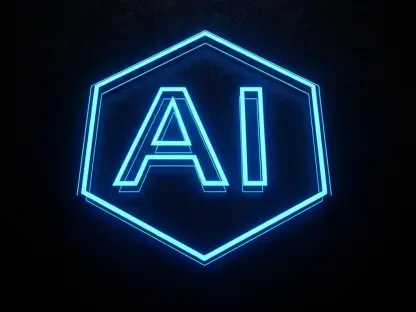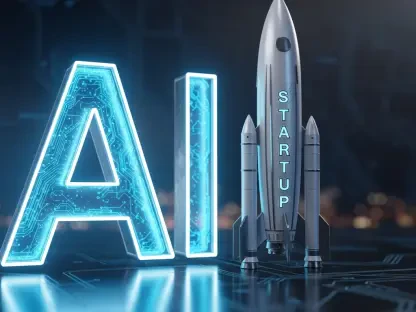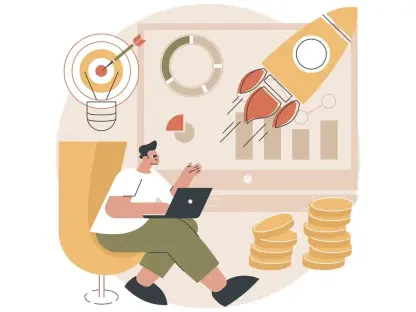This guide aims to equip SaaS professionals with the knowledge and tools to navigate the transformative impact of artificial intelligence on their industry. It highlights specific roles at risk of obsolescence due to AI advancements and provides a clear, step-by-step roadmap to adapt and thrive in this evolving landscape. By following the strategies outlined, readers can future-proof their careers, embrace emerging opportunities, and remain competitive in a tech-driven world.
The rapid rise of AI is reshaping the SaaS sector at an unprecedented pace, leaving many professionals grappling with uncertainty about their job security. Imagine logging into a professional network and seeing a post declaring that a task which once took days is now completed by AI in mere minutes—such anecdotes are becoming commonplace. Since AI tools gained mainstream traction, the conversation around job displacement has intensified, sparking both fear and curiosity about what lies ahead. This guide addresses these concerns head-on, offering actionable insights into the roles most vulnerable to automation.
Understanding the stakes has never been more critical for SaaS workers, as the industry faces rapid changes driven by technological advancements. The purpose here is not only to identify the declining job categories but also to empower individuals with practical strategies to pivot, upskill, and stay relevant. By delving into real-world examples and expert insights, this resource serves as a beacon for those ready to adapt to the AI revolution. The journey begins with recognizing the forces at play and ends with a tailored plan to secure a sustainable career path.
The AI Revolution: A Wake-Up Call for SaaS Professionals
The emergence of AI as a dominant force in the SaaS industry has sent ripples through the professional community, prompting urgent discussions on platforms like social media. Posts circulating online often highlight startling efficiencies, such as AI completing complex tasks in a fraction of the time humans require, reflecting a broader shift that cannot be ignored. This trend underscores a growing reality: AI is not a distant threat but a present force reshaping workflows and expectations.
Real-world milestones, such as the widespread adoption of conversational AI tools since their breakout a few years ago, exemplify this transformation. These tools have moved beyond novelty to become integral in automating processes once handled exclusively by human employees. For many SaaS professionals, the fear of job displacement looms large, yet this moment also presents an unprecedented opportunity for those willing to evolve alongside technology.
Hope lies in the surging demand for AI-related skills, which offers a lifeline to those prepared to adapt, and the purpose of this exploration is to dissect the specific SaaS roles facing decline due to automation while equipping readers with actionable strategies to pivot and prosper. By embracing change, professionals can turn potential obsolescence into a catalyst for growth and innovation in their careers.
Why AI Is Reshaping the SaaS Job Landscape
AI’s disruption in the SaaS sector mirrors historical patterns of cost-cutting measures, though with a modern twist. In the past, companies often turned to offshoring or budget reductions to streamline operations, but today, automation through artificial intelligence has taken center stage. This shift represents a fundamental change in how efficiency is achieved, prioritizing technology over traditional labor solutions.
The impact is particularly pronounced for entry- and mid-level positions within tech, where AI is dismantling foundational career paths. According to LinkedIn’s chief economic opportunity officer, Aneesh Raman, the technology sector is experiencing the initial waves of this transformation, with AI effectively breaking the lower rungs of the professional ladder. This insight reveals a stark reality: opportunities for newcomers and mid-tier workers are shrinking as automation gains ground.
At the core of this upheaval is AI’s increasing proficiency in executing specific tasks with precision and speed, which is reshaping the landscape of various industries. From routine data handling to complex problem-solving, machines are proving their capability to outperform humans in select areas. This growing competence sets the stage for a closer examination of the job roles most affected, shedding light on the urgent need for adaptation in the SaaS ecosystem.
SaaS Roles on the Decline in the Age of AI
The SaaS industry is witnessing a seismic shift as AI technologies encroach on roles once considered secure, backed by compelling data and real-world cases. Automation is not merely a buzzword but a tangible force reducing the demand for human intervention in certain job functions. This section aims to provide clarity on which positions face the greatest risk, supported by evidence from industry trends.
While AI’s capabilities are impressive, a balanced perspective acknowledges its limitations in fully replacing human expertise. Emotional nuance, strategic foresight, and creative problem-solving remain areas where technology falls short. Understanding these boundaries offers a sliver of reassurance amid the uncertainty, emphasizing that adaptation, rather than replacement, is often the immediate challenge for many roles.
The following subsections delve into specific job titles under threat, detailing how AI is reshaping responsibilities and expectations. Each role is examined with relevant statistics and examples to paint a comprehensive picture of the changing landscape. The goal is to inform and prepare professionals for the inevitable shifts while highlighting areas where human value persists.
Customer and IT Support Representatives
AI’s advancements, particularly through large language model-based tools, are revolutionizing customer and IT support functions in SaaS environments. These systems can independently manage tickets, draft responses, and access internal databases to provide solutions, significantly reducing the need for human agents. This automation streamlines operations, often handling routine inquiries with remarkable efficiency.
Gartner projects a substantial decline in these positions, estimating a 20 to 30 percent reduction by next year due to increased investments in generative AI. Such predictions are grounded in the rapid integration of AI bots that scan company resources and past interactions to address queries beyond basic FAQs. The trend is clear: technology is poised to handle a growing share of support tasks.
However, not all aspects of support can be automated, as evidenced by real-world recalibrations in the industry. For instance, Klarna, after initially replacing hundreds of agents with AI, faced quality concerns and began rehiring human staff in recent times. This case illustrates that while AI excels in many areas, certain complexities still demand a personal touch.
The Human Touch Still Matters
Despite AI’s prowess in managing routine support tasks, interactions requiring emotional depth or nuanced understanding often necessitate human involvement. Customers and employees alike may encounter situations where empathy or contextual insight is critical, areas where algorithms struggle to replicate genuine connection. Klarna’s experience serves as a reminder that technology cannot fully bridge this gap.
This limitation highlights a persistent need for human agents in scenarios involving intricate problem-solving or sensitive communication. While AI can handle the bulk of straightforward inquiries, the subtleties of human interaction remain a domain where people excel. Professionals in support roles should focus on honing these irreplaceable skills to complement automated systems.
Manual QA Testers
The rise of AI-driven automation tools is significantly diminishing the demand for manual quality assurance testers within SaaS companies. Layoffs at organizations like Indeed a couple of years ago, which eliminated entire QA teams, signal a broader industry pivot toward automated testing solutions. This shift prioritizes efficiency, often sidelining testers who lack technical skills in automation.
Employers are increasingly favoring candidates who can write code to develop testing pipelines, aligning with a vision of transitioning to machine learning engineering. Tech leaders like Mark Zuckerberg have publicly discussed this evolution, with strategic hires indicating a move away from traditional QA roles. The message is clear: manual testing is becoming outdated in the face of advanced technology.
The decline in manual QA positions underscores a critical need for adaptation among affected professionals. As automation becomes the norm, the industry’s expectations are shifting toward a more tech-savvy workforce. Those in this field must recognize the urgency of evolving their skill set to remain relevant in a rapidly changing environment.
Coding Skills as a Lifeline
For QA testers facing obsolescence, acquiring coding skills offers a vital pathway to stay competitive in the SaaS sector. Learning automation scripting and related technical proficiencies can transform a manual tester into a valuable asset for modern testing pipelines. This transition aligns with the industry’s direction toward integrating AI and machine learning.
Embracing these skills not only mitigates the risk of job loss but also opens doors to new opportunities within the tech industry. Testers who adapt can contribute to developing and maintaining automated systems, ensuring their relevance in an AI-driven landscape. The focus should be on continuous learning to bridge the gap between manual and automated testing roles.
Data Entry Specialists
Data entry roles, characterized by repetitive and rules-based tasks, are among the most vulnerable to AI and robotic process automation in the SaaS space. Technologies like optical character recognition and workflow automation tools are rendering manual data transcription obsolete. This trend is evident in the integration of automation features across everyday software platforms.
The US Bureau of Labor Statistics forecasts a steep decline in clerical positions, projecting a 15 to 38 percent drop by 2033 for roles such as data entry keyers and file clerks. This statistic reflects the pervasive adoption of AI solutions that categorize, transcribe, and manage data with minimal human input. The market already showcases numerous tools designed to eliminate these routine responsibilities.
As automation continues to infiltrate SaaS workflows, data entry specialists face an uphill battle to maintain relevance. The proliferation of systems that autonomously handle expense categorization or anomaly detection in reports signals a diminishing need for manual intervention, and professionals in this field must heed these warnings and seek alternative career paths.
Automation’s Unstoppable March
The trajectory of automation in clerical tasks is relentless, with AI poised to dominate nearly all routine data handling in the near future, transforming the workplace landscape. From Slack notifications to expense tracking, modern tools are embedding automation into their core functionalities, leaving little room for manual processes. This reality marks a turning point for data entry roles.
Professionals tied to these tasks must acknowledge that resistance to this wave is futile, as technology’s relentless march forward shows no signs of slowing. The urgency to pivot away from such positions cannot be overstated, with automation rendering traditional data entry nearly obsolete. A proactive shift toward roles that are less susceptible to automation is the only viable solution.
Basic Business and Data Analysts
AI tools are encroaching on the domain of basic business and data analysts, particularly in tasks involving routine data processing and reporting within SaaS firms. Platforms capable of analyzing large datasets, identifying patterns, and generating actionable insights are reducing the need for human analysts in repetitive roles. This capability allows even non-specialists to perform basic analytical functions with ease.
The risk to these positions is tempered by AI’s known limitations, such as the tendency to produce inaccurate outputs or “hallucinations” that require human verification. Zoho, a key player in analytics software, emphasizes that while data is crucial, emotional intelligence and responsiveness remain vital in decision-making. This perspective highlights a boundary to AI’s reach in analytical roles.
Nevertheless, the threat to basic analyst positions persists as AI continues to refine its accuracy and scope. Professionals engaged in standard KPI tracking or report compilation must be vigilant, as their core duties are increasingly automatable. The challenge lies in distinguishing oneself beyond the capabilities of these emerging technologies.
Beyond Numbers: The Value of Human Insight
While AI excels at crunching numbers and generating reports, human insight remains indispensable for strategic decision-making in SaaS environments. Analysts who bring emotional intelligence and contextual understanding to their work can offer perspectives that machines cannot replicate. This human element is a critical differentiator in business analysis.
The ability to interpret data within a broader strategic framework, coupled with empathy for stakeholder needs, ensures that human analysts retain their value in an increasingly automated world. Zoho’s stance reinforces the notion that decisions informed by data alone lack the depth provided by human judgment. Professionals should leverage these unique strengths to secure their place in the industry.
Key Takeaways: SaaS Jobs Most at Risk
The SaaS roles facing the steepest decline due to AI advancements are summarized below for quick reference, highlighting the urgency of adaptation in the rapidly evolving tech landscape to ensure relevance and job security in the industry:
- Customer and IT Support Representatives: AI manages routine tickets, significantly reducing the need for human agents.
- Manual QA Testers: Automation tools decrease the demand for testers lacking coding skills, pushing the industry toward technical expertise.
- Data Entry Specialists: Robotic process automation and workflow tools eliminate repetitive clerical tasks, nearly phasing out these roles.
- Basic Business and Data Analysts: AI handles routine analysis and reporting, though human oversight remains essential for nuanced decisions.
Future-Proofing Your SaaS Career in an AI-Driven World
The lessons from declining SaaS roles extend beyond specific job titles, reflecting broader career trends across tech and related fields. AI’s influence is creating a demand for new competencies, with job postings mentioning AI skills surging by 108 percent according to Jobs for the Future. This statistic signals a clear direction for professionals seeking stability amid disruption.
Agility is paramount in navigating the uncertainty brought by AI, as organizational resistance to AI-native workflows poses future challenges. Traditional industries may offer refuge for SaaS talent, absorbing skilled workers into roles requiring digital expertise. This potential crossover underscores the importance of versatility in career planning during this transformative era.
The strategies outlined below provide a comprehensive guide to safeguarding a SaaS career against AI’s encroachment. From skill development to exploring new industries, these approaches address immediate risks and long-term opportunities, ensuring that professionals can adapt and thrive. The focus is on proactive steps to ensure relevance in an increasingly automated world.
Strategy 1: Assess Your Job’s Vulnerability
Evaluating the risk level of a current role is a critical first step for SaaS professionals facing AI disruption. A framework from Personal Math offers a practical method to compare personal output with AI capabilities, encouraging a systematic analysis. This process begins by identifying the highest-value work tasks, such as data analysis or customer engagement.
Using a 1 to 10 rating scale, individuals should rigorously test leading AI tools against their own performance in these key areas. This comparison must be revisited quarterly to track AI’s rapid advancements and adjust career strategies accordingly. Such regular assessments ensure that professionals remain aware of encroaching automation risks.
The goal is to pinpoint how close AI is to matching or surpassing personal contributions in critical job functions, and if the technology scores at least half as high as human output, immediate action to redefine the role becomes necessary. This proactive approach helps in staying ahead of potential displacement.
Honesty Is Your Best Tool
A candid evaluation of skills versus AI capabilities is essential, as the gap between human and machine performance narrows swiftly, and overestimating personal value or underestimating technology’s progress can lead to complacency, risking sudden obsolescence. Brutal honesty in this self-assessment drives effective decision-making.
Acknowledging where AI stands stronger compels professionals to address vulnerabilities without delay, fostering a realistic understanding of the competitive landscape. This transparency enables timely pivots or skill enhancements to stay ahead in the field. Facing these truths head-on is the foundation for a resilient career strategy.
Strategy 2: Join an AI-Native Company
Immersion in an AI-native company offers a strategic advantage for SaaS professionals aiming to stay at the forefront of industry trends, as these organizations integrate AI into every workflow, providing firsthand exposure to cutting-edge practices. Elena Verna, a growth expert, notes that employees in such environments default to solving challenges with AI, from design to automation.
Traditional companies often struggle with outdated rituals and approval layers, which hinder AI adoption and innovation, making it challenging to keep pace with technological advancements. In contrast, AI-native firms operate with flatter structures and faster feature deployment, fostering autonomy among staff. This dynamic setting serves as a learning hub for those eager to master emerging technologies.
Seeking employment in such progressive environments early can position individuals ahead of broader industry shifts. The experience gained in these settings equips professionals with insights into future work paradigms, enhancing adaptability. This move is a calculated step toward long-term career security.
Early Adoption Equals Competitive Edge
Joining an AI-forward organization at an early stage provides a significant edge over peers in traditional setups. Exposure to innovative tools and methodologies sharpens skills that are increasingly in demand across the tech sector. This early involvement translates into a deeper understanding of AI’s practical applications.
The competitive advantage lies in mastering AI-driven processes before they become industry standards. Professionals who adapt early can influence how these technologies are implemented, securing leadership roles in the transition. Embracing this path ensures relevance as the SaaS landscape evolves.
Strategy 3: Upskill in High-Demand Areas
Acquiring skills in high-demand areas is a cornerstone of future-proofing a SaaS career against AI disruption, especially as the industry evolves rapidly. Fields like prompt engineering, data science, and AI integration are seeing exponential growth, offering viable paths for professional reinvention. These competencies align with the industry’s trajectory toward automation and advanced analytics.
Practical steps include mastering prompt engineering to optimize AI interactions, enhancing data science knowledge for strategic decision-making, and contributing to AI integration projects at current workplaces. Utilizing AI tools to recommend relevant courses with digital credentials further streamlines this learning process. Such targeted upskilling ensures alignment with market needs.
The focus on continuous education reflects the reality that standing still is no longer an option in the tech industry, where rapid advancements demand constant learning to stay relevant. Engaging with industry resources, such as podcasts or expert-led discussions, can provide actionable insights for skill development. This commitment to growth is essential for maintaining career momentum.
Credentials Boost Credibility
Earning verifiable certifications in newly acquired skills significantly enhances professional credibility in the SaaS field. Digital credentials from recognized platforms validate expertise, making resumes stand out to potential employers. These qualifications serve as tangible proof of adaptation to AI-driven demands.
Beyond personal growth, credentials signal a proactive stance to hiring managers, distinguishing candidates in a competitive market. Prioritizing courses that offer such validations ensures that learning translates into career capital. This step solidifies a professional’s value in an ever-evolving industry.
Strategy 4: Explore Apprenticeships
For newer SaaS professionals, apprenticeships present a powerful entry point to gain skills amidst dwindling entry-level opportunities. Programs like those at IBM, which boast a 96 percent retention rate, demonstrate the effectiveness of learning while earning in fields like software engineering and data science. These initiatives offer structured growth without requiring prior degrees.
Companies benefit immensely from establishing apprenticeship programs, addressing talent shortages caused by AI displacement, and forward-thinking learning and development teams should consider launching such initiatives to nurture adaptable workforces. This mutual benefit strengthens both individual careers and organizational resilience.
Apprenticeships bridge the gap between theoretical knowledge and practical application, equipping participants with relevant experience. They serve as a testing ground for integrating AI tools under mentorship, preparing individuals for full-fledged roles. This pathway is particularly valuable in a tech landscape that prioritizes hands-on expertise.
Learn While You Earn
The dual advantage of apprenticeships lies in acquiring skills while receiving compensation, a practical solution for career transition that offers significant benefits to those entering new fields. This model reduces financial strain during learning phases, allowing individuals to focus on professional development. Participants emerge with both experience and income, a rare combination in entry-level scenarios.
This approach fosters a seamless integration into the SaaS workforce, aligning personal growth with industry needs. The hands-on nature of apprenticeships ensures that skills are directly applicable, enhancing employability. Embracing this opportunity can accelerate career progression in uncertain times.
Strategy 5: Pivot to New Roles or Industries
When AI threatens current roles, exploring opportunities outside SaaS or in adjacent fields becomes a strategic necessity, especially as traditional industries are increasingly seeking SaaS talent to build digital tools. As noted by Curran Clark, founder of ContractorNerd.com, there is a growing convergence of tech and conventional sectors. This trend opens unexpected avenues for career shifts.
Freelancing also emerges as a flexible option, filling gaps left by downsizing in SaaS teams. Online discussions in professional communities reveal a growing reliance on gig workers for tasks once handled by full-time staff. This shift allows experimentation with diverse projects and exposure to varied business models.
Pivoting requires a mindset of exploration, whether transitioning to a new sector or adopting a freelance model. Both paths offer unique learning opportunities, from understanding different industry needs to testing AI tools in varied contexts. This adaptability can redefine a professional’s trajectory in meaningful ways.
Freelancing Offers Flexibility
The freelance model provides unparalleled flexibility, enabling SaaS professionals to explore AI tools across multiple companies and projects. This variety fosters rapid learning and adaptation, keeping skills sharp in a dynamic market. Freelancers can tailor their workloads to align with personal and professional goals.
Engaging with diverse clients not only builds a robust network but also often leads to unexpected opportunities, making it a valuable aspect of professional growth. The autonomy of freelancing allows for experimentation without the constraints of a single employer, enhancing resilience. This path offers a practical way to navigate career uncertainty with confidence.
Strategy 6: Strengthen Soft Skills
In an era where AI handles technical tasks, soft skills like creativity and emotional intelligence become irreplaceable assets for SaaS professionals, setting them apart in a competitive landscape. The World Economic Forum highlights the growing importance of these human-centric abilities in the evolving workplace.









